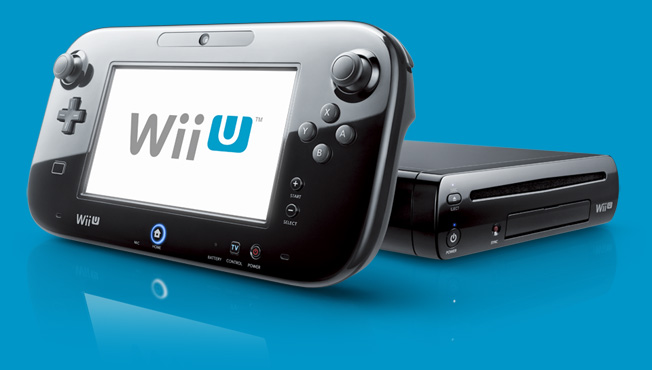Nintendo will finally make its Wii U available to customers this November, after having previewed the next-gen console for over a year now, the company announced at a press event today. The Wii U will come in a $299.99 Basic version in white with 8GB of onboard storage, and a 32GB Deluxe model in black for $349.99. It’ll hit the U.S. on November 18 and Europe on November 30.
The console will ship with one of its signature GamePads, the touchscreen controller that looks and behaves a bit like a standalone mobile console or a tablet, and which gives gamers an added element of play, either via second-screen content or via the ability to play games on the handset instead of the TV.
Early response to the controller device has been lukewarm, with many criticizing its battery life (three to five hours) and how it can’t operate as a standalone device without the Wii U base, something Sony is capitalizing on by making the Vita a second-screen device for some PS3 games. Another concern was that originally, each console only supported one GamePad at a time; Nintendo, however, has since said that the Wii U will ship with support for two GamePads at once. Wii U owners can also connect up to four Wii Remotes at once, and your existing hardware for the original Wii will be compatible.
For Nintendo, this is a huge launch. The company ran into trouble early on with its last hardware release, the 3DS, which started slowly even though it gradually gained steam. But following the blockbuster success of the Wii and Nintendo DS, it was a considerable wake-up call. The gaming giant posted its first loss in three quarters in July, owing to a 3DS that still wasn’t generating income despite an uptick in sales. Some credit the rise of mobile gaming as one of the reasons behind Nintendo’s flagging fortunes.
Depending on how the Wii U fares, we could see drastic changes at the Japanese game company. Shareholders have pushed Nintendo to consider becoming a platform-agnostic game publisher in order to get out of the thin-margin hardware game and bring lucrative brands like Mario to iOS and Android devices. The Wii U could be Nintendo’s last big chance to prove that it can still move hard goods, not just beloved gaming icons.
